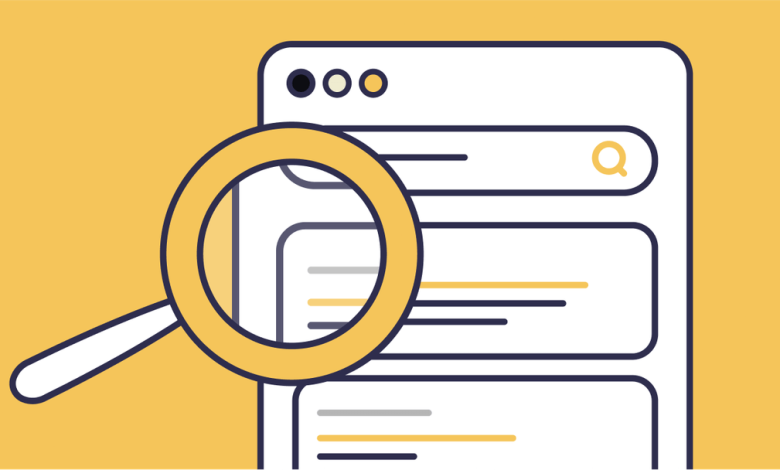
Agentic AI is a term that is being frequently used to describe more complex output from AI applications. However, what people are often describing as agentic AI is really just Generative AI with more complex reasoning and better-polished outputs.
True agentic AI adds another level, enabling the agent to be autonomous and proactive, taking on tasks outside of the chat window without constant human oversight. When it comes to browsing, this could completely alter our day-to-day interactions online, moving us from manually reading through generative AI outputs to working alongside an AI that navigates, searches, buys and acts on our behalf, bringing a new era of internet use.
Generative AI
What’s being used today by most people is Generative AI. You input a prompt, be it a question or a statement, and the AI comes back with an answer. This is revolutionary in itself and has already shifted how people search and use the web; instead of visiting multiple websites, many now turn to AI tools for answers, already reducing the visitors on webpages and increasing the need for businesses to invest in GEO or Generative Engine Optimisation.
Generative AI is effective at producing text, images, answers to questions and even code. But it isn’t taking on tasks end-to-end yet; it still relies on human interaction at every step. For example, if I use the prompt “buy me a pair of size 7 hiking shoes”, generative AI will return suitable options, suggest the best ones and provide links where I can add items to my basket. This speeds up the decision but leaves the execution to me.
Agentic AI
Agentic AI goes a step further. Instead of waiting for prompts, it can operate autonomously, chaining actions together to achieve a goal. In the same shoe example, an agentic AI wouldn’t just show me options; it could compare prices across multiple websites, select the best deal, add the item to my basket, and even arrange delivery. It works across platforms and applications, handling a process rather than just a single query.
The key difference is proactivity. Generative AI provides outputs; agentic AI can act. It moves beyond the chat window and into the tools we use, potentially embedded in browsers themselves. Rather than us typing and clicking through the web, the browser could become a place where the AI takes action on our behalf.
This has a much wider reach than just simplifying a day-to-day purchase. Essential services such as healthcare could diagnose, treat and schedule appointments without direct human input. Legal contracts could be reviewed, amended and managed to free up valuable time. Even education and public services would benefit from Agentic AI’s ability to provide tailored services for individuals without the need for direct human oversight at every step
Agentic AI Browsers
Currently, if you want a genuine agentic browser, you have to look beyond mainstream tools. Some experimental tools built on open-source frameworks already demonstrate how entire workflows can be completed.
These experimental tools can carry out full tasks such as planning a weekend away by comparing flights, booking hotels, pulling maps and drafting an itinerary. They can also shop end-to-end, from finding products that match your specific needs to checking reviews, comparing prices, adding the item to your basket, and even moving through checkout. Tools like this show that agentic AI is already here, and its capabilities will only grow as the technology advances.
The natural next step is for this technology to be built into mainstream browsers. Key players in this area are already laying the groundwork with projects that provide:
- AI support embedded directly in the browser
- Extensions that allow autonomous navigation and form-filling
- Shifting browsing and search from static results to conversational answers
- Multimodal assistants that can see and interpret context in real time
If activated at scale, this would mark the arrival of the first mainstream agentic browsing experience. Large technology providers also hold the advantage of extensive data sources; this foundational data would make their agentic AI far more powerful from day one.
Risks of Agentic AI
The promise of agentic AI comes with clear risks; giving an AI the power to act on our behalf creates opportunities for error and exploitation. Prompt injections could trick a browser into carrying out unintended actions. Agents could buy the wrong product, fall for phishing attempts, or make decisions without the user noticing until after the fact. Oversight and transparency will be critical; without them, users may find themselves handing over too much trust to systems that are still experimental.
Privacy and Processing
If browsers start acting on our behalf, the big question is where the processing happens, in the cloud or in-browser.
Cloud processing makes it possible to run long, multi-step workflows, draw on vast amounts of data, and keep improving as models evolve. The downside is that your queries and intentions leave your device. That raises questions about ownership, use, and whether the data becomes just another asset for big platforms to exploit.
Keeping tasks on-device means more privacy, faster responses for simple jobs, and a stronger sense of control. But devices today can’t yet match the scale of the cloud. Local models are improving quickly, but they’re not ready to replace the full infrastructure behind cloud AI.
The solution is likely a hybrid approach. Some reasoning and lightweight tasks will run in the browser, while heavy lifting is offloaded to the cloud. That may give the best balance of performance and privacy. However, it still raises questions about data security and safety; for most users, trust in how that balance is managed will matter as much as speed or accuracy.
The Future of Websites in an Agentic World
If browsing shifts from something humans do to something AI agents handle on our behalf, it raises a bigger question: what role will websites play? Right now, websites are designed for people. Every layout, colour scheme, navigation bar and call to action is built to attract and guide a human visitor. But if an AI agent is the one “reading” the site, most of that design work becomes redundant.
In this scenario, websites may evolve into something closer to structured data layers. The visual design and user journeys matter less because the AI strips out the surface and delivers the outcome directly. We don’t scroll, click or compare; we simply receive the AI’s decision, recommendation, or action. That shift has major implications for the creative industries that have built the modern web, from UX designers and JavaScript developers to content creators and digital marketers.
At the same time, new competitors may appear who design sites not for people at all, but purely for AI agents. These sites could be built to prioritise clarity, machine readability and direct integration with agentic systems, creating an ecosystem of web pages that no human ever sees. The question then becomes whether existing ranking factors such as domain authority, backlinks and content depth will continue to matter, or whether entirely new signals will decide what information reaches users through their agents.
That creates a thought-provoking future: the visible web becomes thinner, more automated, and less interactive for individuals. The creative surface is still there, but most people never see it, because their agents do the work. Whether that makes websites obsolete, or simply invisible to most users, is an open question, but it suggests a fundamental change in what the web is for and who it’s built to serve.
Preparing for Agentic AI
Agentic AI has the potential to change the way we use the web, from reactive queries to proactive assistance. But with change always comes new questions and concerns, trust, privacy and business models will need to evolve to keep users safe. Agentic AI will also need to be reliable enough for users to consider changing their current habits. The technology is moving quickly, and the businesses that start testing, planning and adapting now will be the ones best placed to thrive in the next era of search.



